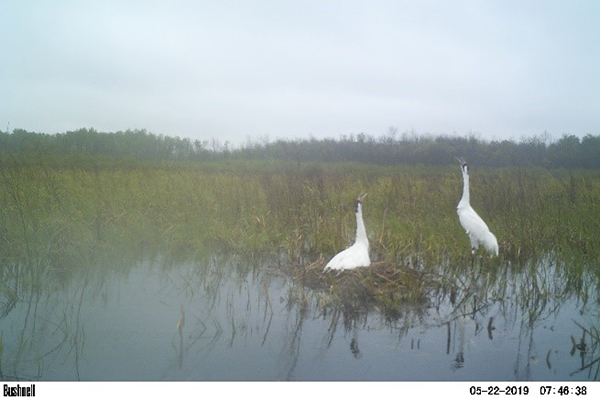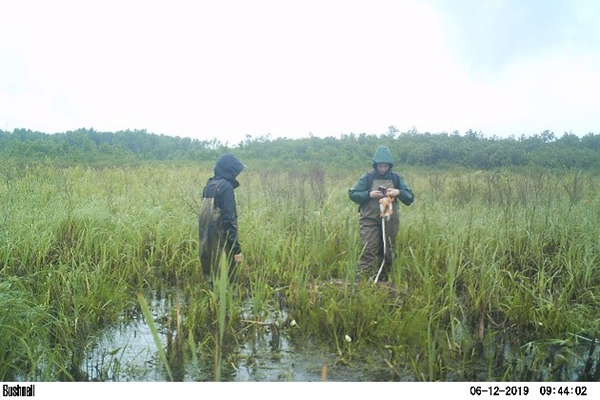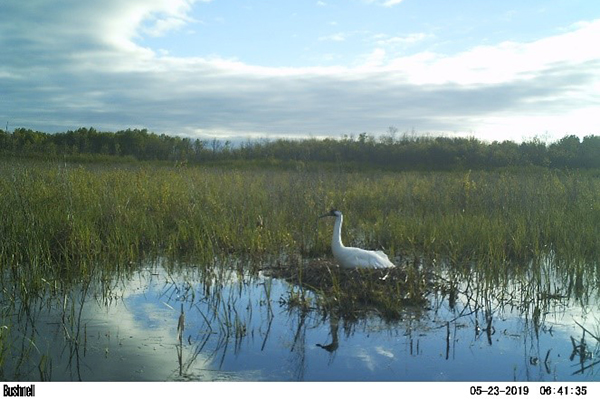
This year, for the second time, we recorded a female-female pair of Whooping Cranes nesting and incubating eggs together in Wisconsin. Females 2-15 and 28-05 have been together since 2017. Their nest was found by an aerial survey, and we quickly sprang into action. After a tough slog into the marsh warily watching out for protective mother cranes, we found the nest. Our next step was to set up a nest camera in order to monitor the pair’s nesting behaviors.
Once we got word from the survey pilot that the nest had been abandoned later in the summer, we went out to collect our camera. After viewing 8,444 photos we were able to get some insight into their incubation routines. We categorized numerous different behaviors, such as preening, egg manipulation (moving or repositioning eggs), incubation, vigilance and more.

A previous study of nesting Whooping Cranes found three behaviors that were associated with cranes successfully hatching eggs. These were the amount of time spent incubating, manipulating eggs and time away from the nest during daylight hours. When we compared behaviors of male-female Whooping Crane pairs to this female-female pair, we found them to be similar. The female-female pair spent about the same amount of time on the nest and away from the nest as successful male-female pairs. But, they spent more time manipulating eggs, like unsuccessful male-female pairs of cranes. We found that these females only left their nest five times during a 22-day period! Less time away from the nest decreases the risk of predation and ensures eggs are at the optimal temperature for hatching. Unfortunately, we don’t believe their eggs were ever fertilized by a visiting male, so they weren’t able to hatch.

Interestingly, this pair exchanged incubating duties quite frequently during the day and even sometimes at night. In contrast, Sandhill Crane females nesting in Wisconsin tend to spend most of the time on the nest, often incubating all night. The Sandhill females typically only switch incubation duties with males about one or two times per day.
Why was the female-female Whooping Crane pair together and not with another available male? One theory is they could be practicing breeding for when they do find an available male. However, these two females have had associations with other males in the wild, and they still chose to stick together. Although these females are potentially reducing the number of breeding pairs in the population by not breeding with available males, they are behaving similar to male-female pairs and potentially could have a productive nest if they had fertile eggs. Regardless of their reason, we’re glad they are doing well, have the drive to breed and have found a beautiful marsh!
Story submitted by Nicki Gordon, Crane Research Intern. Click here to learn more about the work in North America.
